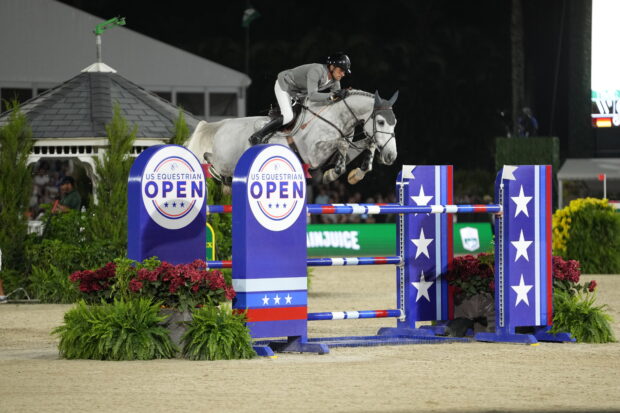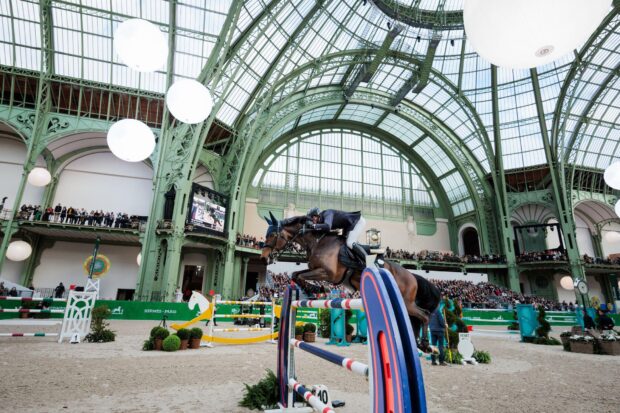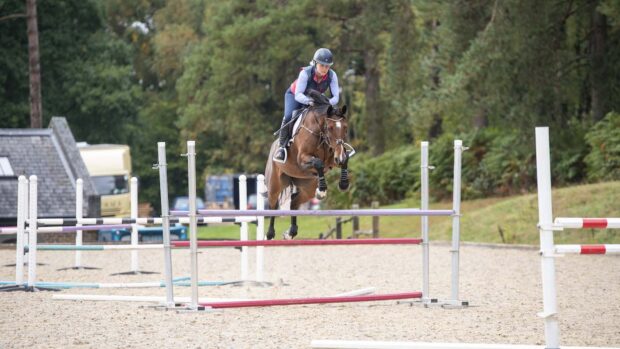The international showjumper uses a canter-on-a-circle exercise to help develop balance and control, which can be used in the ring
Aim
I do this canter exercise regularly, with horses of all ages and abilities. The older and more experienced the horse, the more difficult you can make it. With younger horses, it can be quite a demanding exercise as they might not have developed any brakes yet. For a green horse, I might start off with two poles, one at three o’clock and one at nine o’clock, then add in the third and fourth when they are ready.
It’s a good way of teaching the horse to be soft and carry himself, while being responsive to the control you are asking for.
This exercise also helps riders with their ring rhythm, which is important because they go from forwards to backwards strides frequently. It also teaches the rider to see a stride while not over-jumping their horse.
Exercise

1. Lay out four poles, one at each quarter of a 20-30m circle. Don’t make the circle too small because you don’t want to make it too difficult for the horse. For young or inexperienced horses, start with one pole at a quarter of the circle and build up to four poles.
2. Next, canter six strides between each pole on the circle. Aim to make the strides between the poles exactly the same, in a consistent rhythm. You want the horse engaged, listening and remaining on the same line. It’s also important that you stay in the centre of each pole and don’t cut across, and that the horse is straight through his body.
3. Then start to change the strides between the poles, so do five between one set and six between the next, so that you are riding five, six, five, six. When asking for longer or shorter strides, you need to be smooth and gradual. For longer strides, use your leg and hand to keep the horse soft, then add a gradual leg aid and allow with the hand. To come back to a working stride, lean back and apply a little pressure with your legs, rather than forcing with the hand.
4. Then ride five strides between each pole, and then six between each pole around the entire circle.
Article continues below…
You might also be interested in:

#SundaySchool: the showjumping ‘gym’ with Holly Smith
The international showjumper talks us through this multi-fence workout which she uses with both her younger and more experienced horses

Subscribe to Horse & Hound magazine today – and enjoy unlimited website access all year round
Tips and pitfalls
- Always have a plan in your head of what you’re going to do before you do it.
- If your horse jumps to the left or right over the poles, it will affect the distance to the next pole, so be consistent in where you land after each pole. Having the horse straight means you can set yourself up nicely for the next pole.
- Horses can become disunited, so if this happens bring them back to trot and re-canter.
- Build the exercise up gradually so that your horse learns what you want.
For all the latest equestrian news and reports, don’t miss Horse & Hound magazine, out every Thursday.




